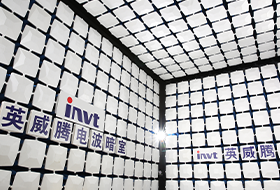Introduction to cold plate liquid cooling
With the development and iteration of technology, the three types of liquid cooling solutions, cold plate, immersion and spray, have made great progress and the technology has become increasingly mature. However, in the traditional impression, the initial investment of liquid cooling solutions in data centers is much higher than that of air cooling solutions. However, from the perspective of the entire life cycle of the equipment, liquid cooling has reached or even surpassed the traditional air cooling solutions in terms of energy saving, land saving and water saving. In addition, liquid cooling has more advantages in performance, which makes liquid cooling an unavoidable high-efficiency solution for applications with high heat density.
Although data center liquid cooling technology has many advantages in providing efficient heat dissipation and energy utilization, it also faces some challenges and problems:
1) High cost
The implementation and maintenance costs of liquid cooling technology are high. Liquid cooling systems require specialized infrastructure and equipment, such as coolant distribution units, cooling towers, pumps and piping systems. The purchase, installation and maintenance of the above equipment require a lot of capital investment, which increases the cost of data center construction and operation.
2) Design and implementation complexity
The smooth implementation of liquid cooling technology requires careful planning and design in the early stage, including appropriate pipeline layout, pump capacity and selection of cooling medium. The structure and layout of the data center also need to adapt to the needs of the liquid cooling system. Therefore, the design and implementation of liquid cooling technology is relatively complex and requires comprehensive consideration and design by a professional engineering team.
3) Difficulty in maintenance and operation
The maintenance and operation of the liquid cooling system requires professional knowledge and technology. The circulation of the liquid cooling medium, the operation of the pump and the maintenance of the cooling tower all require experienced engineers to operate and manage. In addition, the liquid cooling system also requires regular inspection and maintenance to ensure its normal operation and heat dissipation efficiency, and the overall maintenance and operation are difficult.
4) Safety and leakage risk
The cooling medium used in liquid cooling technology may pose potential safety risks to the equipment and the environment. If a leak occurs, the liquid may damage the equipment and may pollute the environment. Therefore, the design and implementation of the liquid cooling system needs to strictly comply with safety standards and specifications, and take necessary safety measures to prevent leaks and accidents.
5) Scalability and compatibility
The implementation of liquid cooling technology needs to be compatible with the equipment and infrastructure of the data center. Some devices may not be suitable for liquid cooling systems or may require additional adaptation and modification. In addition, the liquid cooling system needs to have good scalability to adapt to the addition of new devices and growing heat dissipation needs.

 networkpowersales@invt.com.cn
networkpowersales@invt.com.cn



























